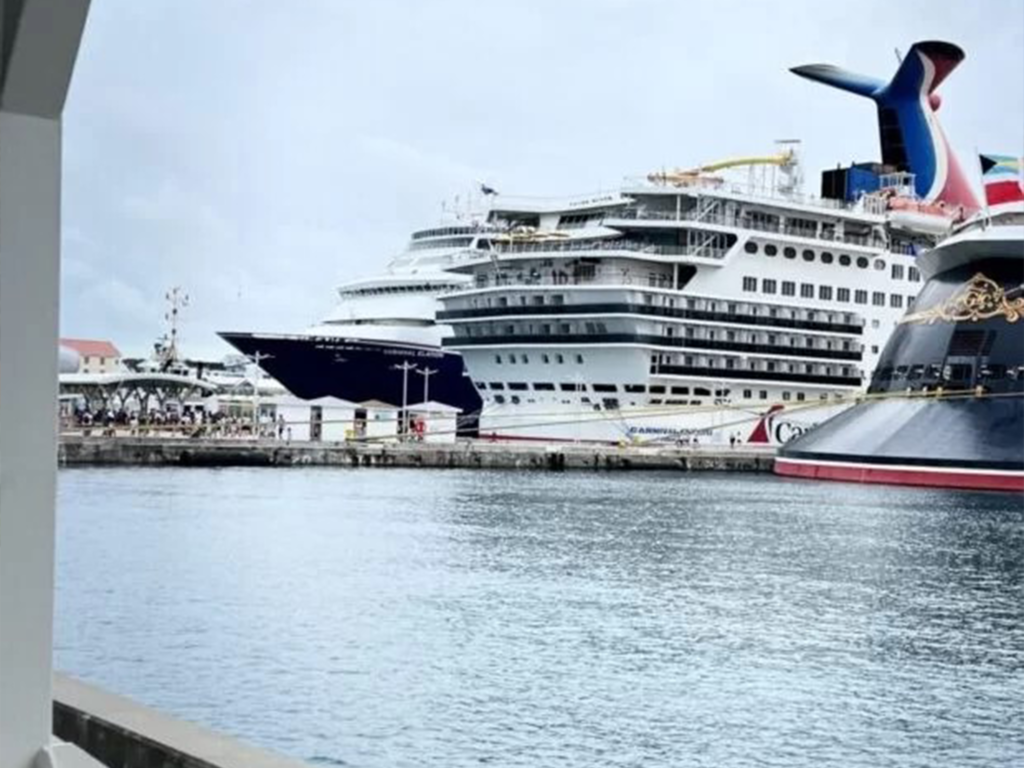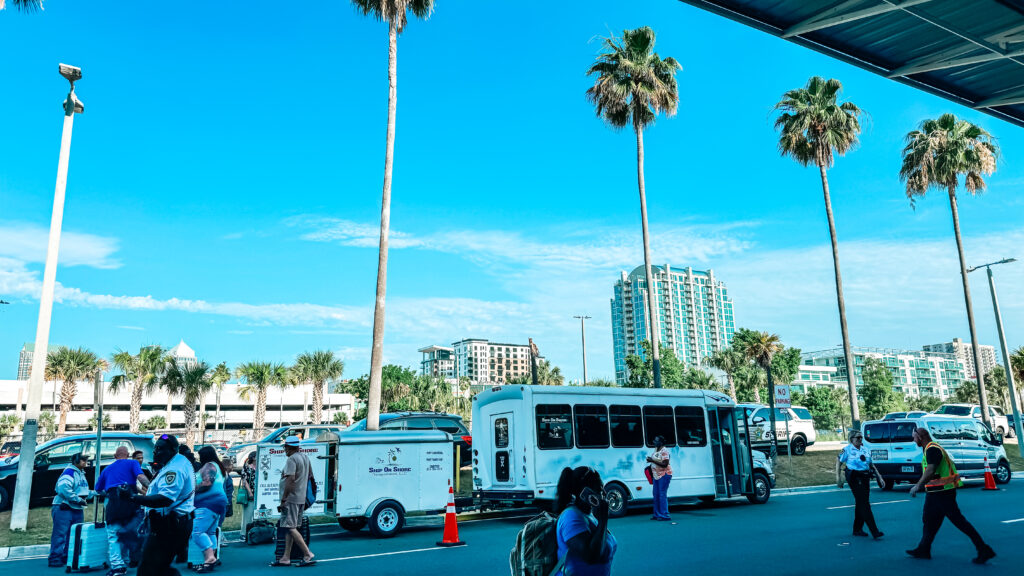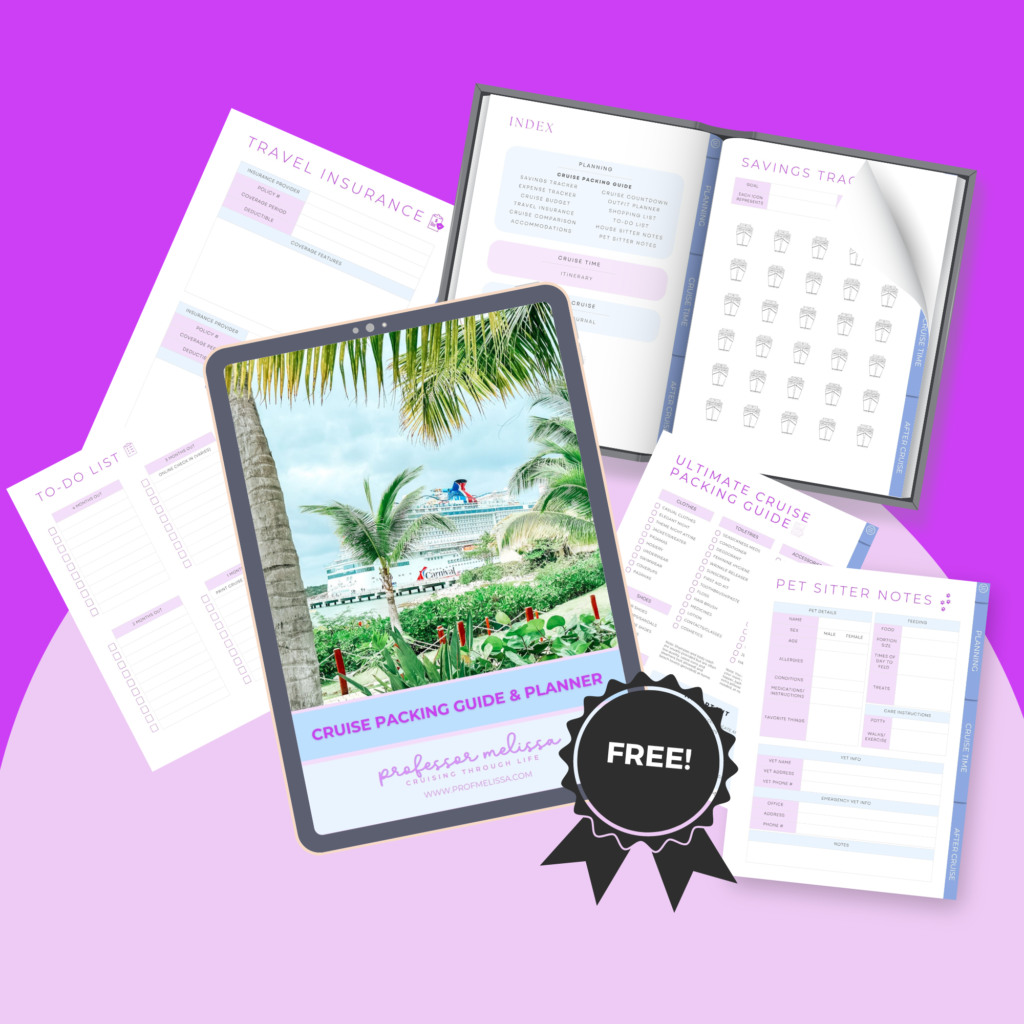What’s a “Mustard Drill”?! Decoding the Language of Cruising
Cruise lingo can make cruising a bit intimidating for a cruise newbie. If you’re a first-timer or still somewhat new to cruising, it can be helpful to learn the “language of cruising.” Here are some common cruise-specific terms that will help you as you make your booking and once you set sail. Aft and Forward, Port Side and Starboard These are sections and directions of a cruise ship. Knowing these terms is crucial for navigating the ship. “Aft” refers to the back of the ship, while “forward” indicates the front. “Port side” is the ship’s left side when facing forward, and “starboard” is the right side. Understanding these terms will make it easier to find your way around. For a deeper dive into these concepts, check out my post about understanding these terms and navigating a cruise ship. Disembarkation Disembarkation is the process of getting off the ship. It happens both on port days, when you get off the ship to explore, and also reflects the final step of your cruise journey, the final disembarkation at the end of your cruise which involves getting yourself and your luggage off the ship and passing through customs. Read my post here to learn more about final disembarkation, what’s involved with it, how long it takes, and the pros and cons of luggage handling options. The term “debark” is synonymous with disembarkation, and both are commonly used in cruise lingo, although “disembarkation” is generally the more commonly used term. Embarkation Embarkation is the process of getting on the ship (you and your luggage). This involves checking in at the port, going through security, and finally boarding the vessel. The embarkation process can be exciting as it marks the beginning of your cruise adventure. It also can be a little chaotic, especially for a newbie, and feels like navigating TSA at an airport. For tips about how to ensure a smooth cruise embarkation, and the pros and cons of carrying on your luggage yourself versus checking it, read this post. Main Dining Room (MDR) Embarkation is the process of getting on the ship (you and your luggage). This involves checking in at the port, going through security, and finally boarding the vessel. The embarkation process can be exciting as it marks the beginning of your cruise adventure. It also can be a little chaotic, especially for a newbie, and feels like navigating TSA at an airport. For tips about how to ensure a smooth cruise embarkation, and the pros and cons of carrying on your luggage yourself versus checking it, read this post. Related: Learn the 5 Secrets to Maximizing Your MDR Experience. Muster Drill A muster drill (not “mustard”) is the required safety briefing conducted by all cruise lines before the ship can set sail. During this drill, passengers are instructed on where to go and what to do in case of an emergency. Attendance is mandatory, and it’s a crucial part of ensuring everyone’s safety on board. If you try to skip it, the cruise line will hunt you down like a dog, so don’t even bother trying. Port Day A port day is when your cruise ship docks at a port, allowing passengers to disembark and explore the destination. Port days are filled with excursions, sightseeing, shopping, and dining opportunities. Each port offers a unique experience, from cultural tours and historical sites to beach outings and adventurous activities. Port days provide a chance to immerse yourself in the local culture and enjoy the beauty of new places before returning to the ship for the next leg of your journey. Learn more about what to expect for port days, and how to prepare for them. Sea Day A sea day is a day during your sailing when your ship does not call on a port and you do not leave the ship. Sea days offer the perfect opportunity to explore the ship’s amenities, relax by the pool, indulge in spa treatments, or participate in onboard activities and entertainment. Stateroom Your cruise room isn’t just a “room”; it’s a stateroom — sometimes called a cabin. Staterooms come in various categories, from inside cabins with no windows to luxurious suites with private balconies. No matter the type, your stateroom will be your cozy home away from home during your cruise, although some staterooms may be better for some people than others. In my post here, I explain the differences between various stateroom types and categories. Related: Learn 3 benefits of an interior stateroom. Steward This is your stateroom attendant, sometimes mistakenly called a “Stewart.” A steward is a crucial part of the great cruise experience. They provide personalized service and ensure your stateroom is clean and comfortable. Stewards often go above and beyond to make your stay special, learning your preferences and addressing your needs promptly. Tender Port Due to narrow channels or shallow water, large cruise ships cannot always navigate to a pier. In these cases, they anchor in the ocean and use smaller boats, or “tender boats,” to transport passengers from ship to shore. Tendering can add an element of adventure to your port visits and offers a unique perspective of your destination from the water. Decoding the Secret Language of Cruising By familiarizing yourself with these terms, you’ll feel more confident and prepared as you embark on your cruise adventure. My video below also explains these things in a bit more detail. https://youtu.be/lswylTJa13Q



